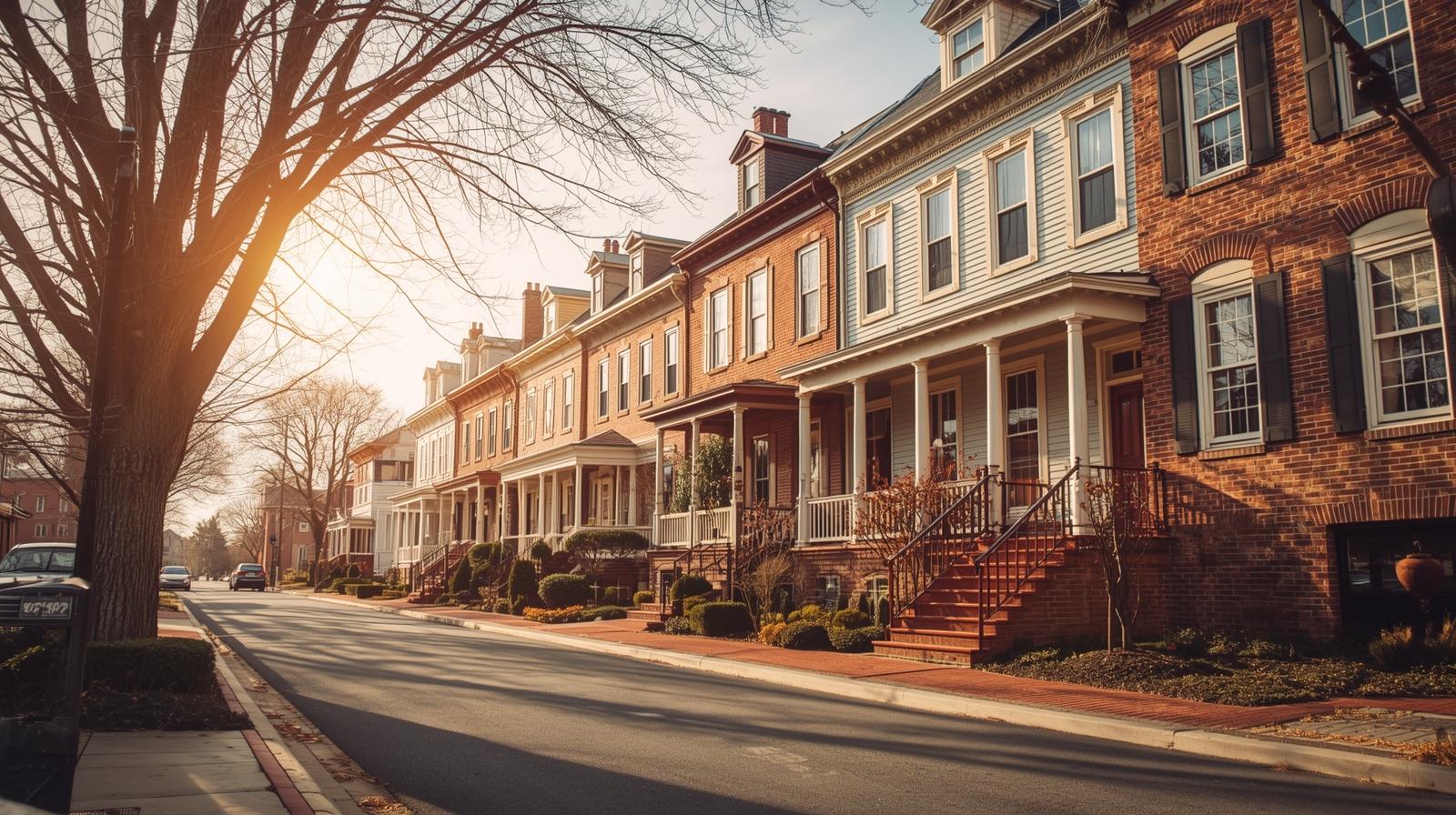Winchester, Virginia, steeped in American history, has a broad variety of historic homes — from colonial-era dwellings to Georgian brick mansions, Victorian builds, farms, and restored downtown properties. Some notable examples include:
-
Abram’s Delight (built 1754) — the oldest house in Winchester. Wikipedia
-
Glen Burnie (circa 1794) — Georgian style, part of Museum of the Shenandoah Valley. Wikipedia
-
Millbank (~1850) — major Greek Revival house in Frederick County near Winchester. Wikipedia
-
Rose Hill Farm (~1797–1850s) — a large farm property with Federal and Greek Revival elements. Wikipedia
These properties aren’t just houses; they’re pieces of living history. Their architectural details, craftsmanship, materials, and even their stories connect deeply with Winchester’s identity.
What Buyers Should Know
Buying a historic home can be a deeply rewarding experience, but it often comes with special considerations. If you’re thinking of purchasing one in Winchester (or really anywhere), here are key points to keep in mind:
-
Historic Designation & Zoning / District Rules
-
Many homes in Winchester are located in the Historic Winchester Zoning District. Being in a designated historic district means that exterior alterations, additions, sometimes even paint colors or window styles may need approval from the Board of Architectural Review.
-
The City of Winchester has Historic District Design Guidelines that outline what is allowed and what is not regarding modifications. winchesterva.gov+1
-
-
Condition & Inspection Are Critical
-
Older homes tend to have aged plumbing, electrical, roofing, foundation issues, possibly lead paint or asbestos depending on how old they are. An inspector who has experience with historic homes is essential.
-
Issues that seem minor (such as moisture intrusion or sagging floors) can mask larger structural or preservation problems.
-
-
Long-Term Maintenance & Repair Costs
-
Historic materials (original woodwork, sash windows, slate roofs, plaster, etc.) often need specialized craftsmen or materials that can be more expensive and harder to source.
-
Regularization: things like insulation, heating/cooling efficiency, roofing, moisture control, might not meet modern standards, which can translate into ongoing expenses.
-
-
Financial Incentives & Limitations
-
Homes that are listed on state or national historic registers sometimes are eligible for tax credits or grants (for restoration, for example). Virginia Housing+1
-
But with recognition can come restrictions. If you want to modernize or expand, you’ll need to check what changes are allowed vs what’s prohibited or restricted.
-
-
Resale Value & Market Appeal
-
For many buyers, the charm, character, craftsmanship, and story of a historic home hold high appeal. These can help with property values — especially in desirable historic neighborhoods.
-
On the flip side, some buyers are wary of the upkeep or limitations, which can affect how quickly such homes sell or at what price. Therefore, how you present and maintain the property matters a lot.
-
-
Energy Efficiency, Comfort, and Updating
-
Upgrading heating/cooling, insulation, windows, while preserving character takes extra thought and care. Storm windows (or interior/exterior storm sashes), discreet HVAC installation, etc., can help.
-
Sometimes you’ll need to balance between maintaining original features vs adding modern convenience in a way that doesn’t compromise historic integrity.
-
What Sellers Should Know
If you own or are selling a historic home in Winchester, here are strategies and considerations to help maximize value and minimize surprises:
-
Know Your Property’s Historic Status & Documentation
-
Does it have a plaque? Is it on the Virginia Landmarks Register or National Register of Historic Places? Are there prior restoration documents, architectural or historic surveys? Having all that information helps. For instance, PHW (Preservation of Historic Winchester) maintains surveys and inventories. phwi.org
-
Understanding what restrictions or approvals are already in place (or needed) helps inform buyers and prevents surprises.
-
-
Highlight Story & Character in Marketing
-
Historic homes need storytelling. What makes this house special — its era, architectural style, notable previous owners, unique features (woodwork, masonry, fireplaces, historic outbuildings, original floorboards)?
-
Professional photography and possibly 3D tours or drone shots (if property is large) can showcase features that distinguish historic homes.
-
-
Be Upfront About Condition / Known Issues
-
Transparency about needed repairs, deferred maintenance, what’s been updated (plumbing, electrical), what’s original — so buyers don’t get cold feet or feel misled.
-
If you’ve done inspections, providing the report (or summary) builds trust.
-
-
Plan Repairs or Upgrades with Historic Sensitivity
-
Fix what you can in a way that aligns with historic guidelines — appropriate materials, workmanship. Sometimes this includes restoring original windows instead of replacing, or using historically appropriate colors, etc.
-
Smaller “tune-ups” (fresh paint, well-maintained landscaping, lighting, etc.) can go a long way without breaking historical correctness.
-
-
Price Strategically
-
Comparable properties in the neighborhood (both historic and newer) should be considered. Adjust for condition, restrictions, unique features.
-
Factor in costs buyers will likely incur (e.g. updating systems, complying with district requirements) — if they believe they’re getting too many unknowns, that can reduce their offers.
-
-
Use the Right Professional Partners
-
Real estate agents familiar with historic homes and local preservation regulations.
-
Perhaps even a preservation consultant or architect who has worked with Winchester’s historic guidelines.
-
Inspectors who know how to find problems typical in older homes and estimate realistic costs.
-
-
Incentives to Buyers
-
If eligible, emphasize tax credits or grants. Buyers often overlook these but they can substantially offset restoration costs.
-
Offer history, charm — the intangible appeal — as part of what they’re purchasing; many people buy historic homes precisely for that.
-
Local Winchester Resources & Rules
It helps to know what Winchester specifically mandates and offers; here are some particulars, including but not limited to:
-
Winchester Historic District Design Guidelines — City provides detailed design guidelines covering what exterior changes are allowed, what materials are acceptable, styles for windows/doors, rooflines, etc. winchesterva.gov+1
-
Board of Architectural Review — any exterior alteration in historic districts typically needs their approval. phwi.org+1
-
PHW (Preservation of Historic Winchester, Inc.) — a nonprofit that maintains research, surveys, helps homeowners with information about architecture and historic inventory. phwi.org
-
Virginia Landmarks Register & National Register — being on these can open up incentives but usually do not by themselves impose as many restrictions as local historic district rules. Knowing both your local and state/federal status is important. Virginia Housing+1
Balancing Preservation vs. Practicality
Historic homes tend to live in the tension between preservation and modern comfort. Buyers and sellers alike should think through:
-
How much restoration vs modernization is acceptable?
-
What features are essential (original floors, fireplaces, moldings, etc.) vs what can be changed?
-
How to invest in improvements that preserve value rather than degrade it (using inappropriate materials or styles can hurt both appeal and compliance).
-
Budgeting for both short-term fixes and ongoing maintenance.
Final Thoughts
For buyers: if you love character, history, architectural detail, and are okay with investing both money and time into a home, historic properties in Winchester are incredibly rewarding. Just go in eyes wide open: know the condition, the regulations, and what you can and can’t do.
For sellers: your job is partly steward of history, partly real estate merchant. Embrace the story of your home, make the right repairs, document everything, and present your home in a way that appeals to someone who deeply values what you’ve got.


 Facebook
Facebook
 X
X
 Pinterest
Pinterest
 Copy Link
Copy Link






